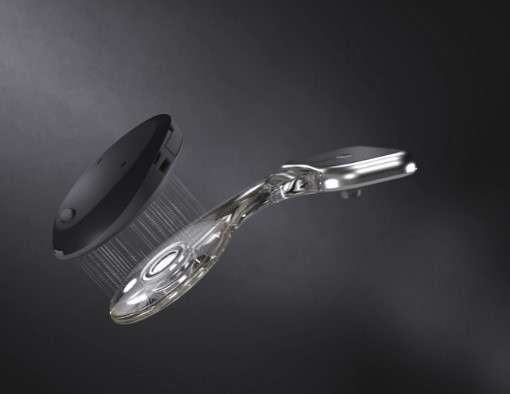Question
What is Piezoelectric Stimulation and why is it important in the Cochlear™ Osia® System?
Answer
The heart of any bone conduction system is the vibrator or actuator that functions as a mechanism to convert amplified sound to mechanical vibration, which can in turn drive the bones in the skull to access the bone conduction pathway to the cochlea or inner ear. The Osia System applies a new and innovative way to create a bone conduction transducer that will produce high frequencies and thus positively impact speech understanding.
As a natural evolution of bone conduction technology, the Osia System was created to combine the best of the direct drive, Baha Connect system and the hygiene and cosmetic advantages of the Baha Attract system. The Osia System is a new approach to an active transcutaneous system. Like other bone conduction systems, the actuator is the “heart” of the process.
In piezoelectric technology, a crystalline material can be formed into compact wafers that are laminated or bonded together. When an electrical current is applied to this crystalline material, contraction and expansion is created that follows the electrical signal. Because these wafers are laminated, the design allows for carefully controlled vibration to occur with out the need for a complex mechanical design containing moving parts and springs. The actual size of the piezoelectric actuator can be formed into a package for optimal temporal bone placement where it can be mated with an osseointegrated fixture to apply vibration to excite the bone conduction pathway. Application of this approach can be accomplished with modifications to the existing knowledge base of traditional Baha surgery.

The remaining components of the Osia Implant System include the magnet/coil assembly and a demodulator. The external Osia sound processor contains a battery-operated circuit that acts to pick up the acoustic signals of interest and then to amplify them. Additionally, this circuit creates a digitally encoded radio frequency link that permits the combination of the amplified acoustic signal to the digital RF carrier to supply power to the implant via an inductive link between two coils (one in the external processor and one in the implanted package). The two coils are securely coupled and aligned with magnets. This elegant design allows for the critical power supply to be maintained in the externally worn device.
The Osia device, an active transcutaneous osseointergrated implant system, provides the ability for clinicians to treat up to a 55dB sensorineural hearing level through the system’s design and efficiency of power. 1
For more information about the Osia System please watch this webinar or visit our website.
References:
- D1478473 CIR final report 12 month Data, Cochlear Bone Anchored Solutions AB. Sweden October 2019
© Cochlear Limited 2020. All rights reserved. Hear now. And always and other trademarks and registered trademarks are the property of Cochlear Limited or Cochlear Bone Anchored Solutions AB. The names of actual companies and products mentioned herein may be the trademarks of their respective owners.
This content is meant for professional use. If you are a consumer, please seek advice from your health professional about treatments for hearing loss. Outcomes may vary, and your health professional will advise you about the factors which could affect your outcome. Always read the instructions for use. Not all products are available in all countries. Please contact your local Cochlear representative for product information. Views expressed are those of the individual. Consult your health professional to determine if you are a candidate for Cochlear technology.
In the United States, the Osia 2 System is indicated in children for ages 12 and above.

